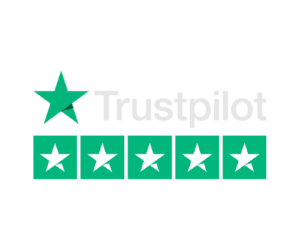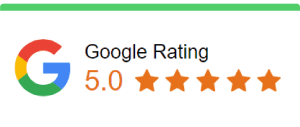The Challenges of B2B SEO Content
B2B companies face unique challenges when it comes to SEO content. With diverse buyer personas, including decision-makers, developers, and analysts, you need to target audiences at different stages of the buyer’s journey. Traditional blogs, while effective for addressing certain queries, often fall short in answering highly specific technical questions or capturing solution-based searches.
Why a Blog Isn’t Enough for Comprehensive SEO
Relying solely on a blog to manage all content types can limit your ability to rank for specialized B2B queries. Blogs are effective for addressing pain points and educating audiences but lack the structural depth needed for comprehensive SEO, especially in technical or highly competitive markets.
Introducing Structured Resource Sections for B2B SEO Success
To fully unlock your B2B SEO potential, your website should be organized into structured resource sections that cater to different user intents. This includes a mixed-content resource section, an education hub, a technical documentation section, and a glossary. Each section serves a distinct purpose, helping to improve both SEO rankings and user experience.
Key Resource Sections to Improve B2B SEO

Mixed-Content Resource Section for Targeting Solution Queries
Benefits of Housing Varied Content Types in One Section
A mixed-content resource section acts as a central hub for diverse types of content such as blogs, webinars, podcasts, case studies, and white papers. It allows users to find information quickly, regardless of their preferred content format, while keeping your content neatly organized by type, audience, and solution.
SEO Value of a Well-Organized Resource Hub
From an SEO perspective, a well-structured resource hub enhances crawlability and helps search engines understand the scope of your content. You can tag content by topic, solution, or audience, enabling you to rank for a wide array of solution-based search terms and long-tail keywords.
Education Section for Top-of-Funnel Queries
Organizing Content by Topic and Subtopic for SEO Benefits
An education section is the go-to place for addressing top-of-funnel queries. By organizing content into topics and subtopics, you allow users to drill down into specific areas of interest, all while creating strong internal linking structures that signal topical authority to search engines.
Pillar Pages for Comprehensive Topic Coverage
Pillar pages act as central hubs for each topic, linking to various subtopics and related resources. This structure not only keeps your content organized but also enhances your ability to rank for broader, highly searched terms. Cloudflare’s Learning Center is a prime example of how a well-structured education section can drive SEO performance.
Documentation Section for Technical Solutions
Importance of Technical Documentation for B2B Audiences
Technical buyers and users often require deep, detailed content that addresses specific challenges or problems. A technical documentation section helps companies cater to these highly knowledgeable users, providing them with valuable resources such as playbooks, guides, and use cases.
Structuring Documentation for Deep Technical Queries
When structuring your technical documentation, it’s important to categorize solutions based on common queries or challenges faced by your target audience. This helps with both user navigation and search engine indexing, allowing you to rank for long-tail technical queries.
Glossary Section for ‘What Is’ Queries and Answer Box Targeting
How Glossary Pages Can Rank for Featured Snippets
A glossary section serves as an excellent tool for answering ‘what is’ questions—perfect for capturing Google’s Answer Box (featured snippet). By providing concise, accurate definitions at the top of each page, you increase your chances of ranking in this highly visible SERP feature.
Structuring Glossary Pages for SEO Efficiency
For maximum SEO impact, glossary pages should pose the term as a question and immediately follow it with a brief, keyword-rich definition. Each term should link to related glossary entries or other relevant resources, enhancing both user experience and internal linking.
Benefits of Each Section in a Holistic SEO Strategy

Mixed Content Hub for Solution-Based Queries
A mixed-content hub enables you to offer a wide variety of content formats that cater to different user needs, from videos and podcasts to blogs and white papers. This section allows you to cover a broad range of solution-based queries, offering users the flexibility to consume content in their preferred format.
Case Studies, Webinars, and Videos to Capture User Intent
Videos, case studies, and webinars help address middle-of-the-funnel questions, targeting users who are already aware of a solution but want to learn more about implementation or ROI. These types of content also enhance engagement, contributing to better on-page metrics like time spent on site and lower bounce rates.
Education Section for Building Topic Authority
An education hub helps establish topic authority by addressing common queries in depth. Educational hubs allow businesses to capture early-stage traffic by targeting top-of-funnel keywords, where users are still in the research phase.
Educational Hubs and Their Role in SEO
By structuring educational content into pillar pages, you can build topic clusters that cover all aspects of a subject. These clusters not only improve your chances of ranking for competitive terms but also provide a clear path for users to continue exploring your content.
Technical Documentation for Long-Tail Keywords
Technical documentation sections help you rank for highly specific, long-tail keywords that are less competitive but critical for conversion. By structuring your documentation for deep technical queries, you can better serve developers, engineers, and other technical users.
Structuring Documentation to Address Complex B2B Queries
Effective documentation sections break down complex processes into manageable steps, often linking to related documents or FAQs. This not only enhances the user experience but also signals to search engines that your site provides comprehensive solutions to niche problems.
Glossary for Quick Wins in Search Visibility
Glossaries can generate quick wins by ranking for high-volume, low-competition keywords like ‘what is a CDN’ or ‘what is cloud computing’. By targeting these entry-level queries, you can capture a wide audience while building a solid SEO foundation.
Using Glossaries to Capture High-Volume, Low-Competition Keywords
Glossary sections should be designed for brevity and clarity, allowing you to rank quickly for featured snippets and other SERP features. The goal is to provide immediate answers to user queries, which can significantly increase click-through rates from search results.
Integrating Structured Sections with Product and Solution Pages
Keeping Product Pages Separate from SEO-Focused Content
Product and solution pages are primarily designed to convert visitors into leads or customers, rather than to rank for SEO. By keeping these pages separate from SEO-driven content, you can maintain the integrity of your messaging and optimize them for conversion-oriented calls to action (CTAs).
Leveraging Internal Linking Between Resource Sections and Product Pages
Internal linking between educational resources, technical documentation, and product pages is critical for guiding users down the conversion funnel. By placing strategic links within your educational or documentation sections, you can move users seamlessly toward your product pages.
Conclusion
The Importance of Structure in SEO Success
In B2B SEO, structuring your content into distinct sections is essential for capturing diverse search intents. Each section—whether it’s a mixed-content hub, education center, technical documentation, or glossary—serves a specific role in your overall SEO strategy. This structured approach enables you to target more high-intent keywords, build topic authority, and improve the user experience.
Structured Sections: The Key to Capturing B2B Queries
For B2B companies, segmenting content into distinct, SEO-optimized sections significantly improves your chances of ranking well in SERPs and capturing a wide range of relevant queries. By balancing topical authority, user experience, and technical SEO, your website becomes a powerful tool for attracting and converting visitors.
How Art Revo Can Help You Unlock Your SEO Potential
Partnering with a digital agency like Art Revo can take your B2B SEO efforts to the next level. As experts in SEO strategy and content optimization, Art Revo understands how to structure websites to maximize visibility across search engines. Whether you’re building out resource sections, optimizing existing content, or expanding into international SEO, their tailored approach ensures that your content is optimized for both global and local audiences.
Art Revo specializes in creating comprehensive SEO strategies that encompass every aspect of your digital presence—from technical optimizations to building authority with well-structured content hubs. By collaborating with an experienced agency, you’ll ensure that your website is not only well-structured but also equipped to capture the most relevant traffic and convert visitors into customers.
FAQs
What is the benefit of having separate content sections on a B2B website?
Separate content sections allow you to organize content by user intent, improve SEO targeting, and enhance the user experience by making it easier to find relevant information.
How do resource hubs impact SEO rankings?
A well-structured resource hub enhances crawlability and allows search engines to better index diverse content formats, improving overall site performance in search rankings.
Can glossary sections help me rank for featured snippets?
Yes, glossary sections are designed to answer ‘what is’ queries concisely, making them prime candidates for capturing Google’s featured snippets and boosting visibility.
Why should product pages be separate from SEO-focused sections?
Product pages should focus on conversions rather than SEO rankings. Separating them from educational or technical sections allows you to optimize for sales-driven actions without compromising SEO goals.
What is the best way to structure technical documentation for SEO?
Technical documentation should be categorized by solution or problem, with clear navigation paths and internal links to related content, allowing both users and search engines to easily access deep technical information.



